Beautiful outside, and inside too. The Kelvingrove Museum is a great building with many interesting exhibitions inside.
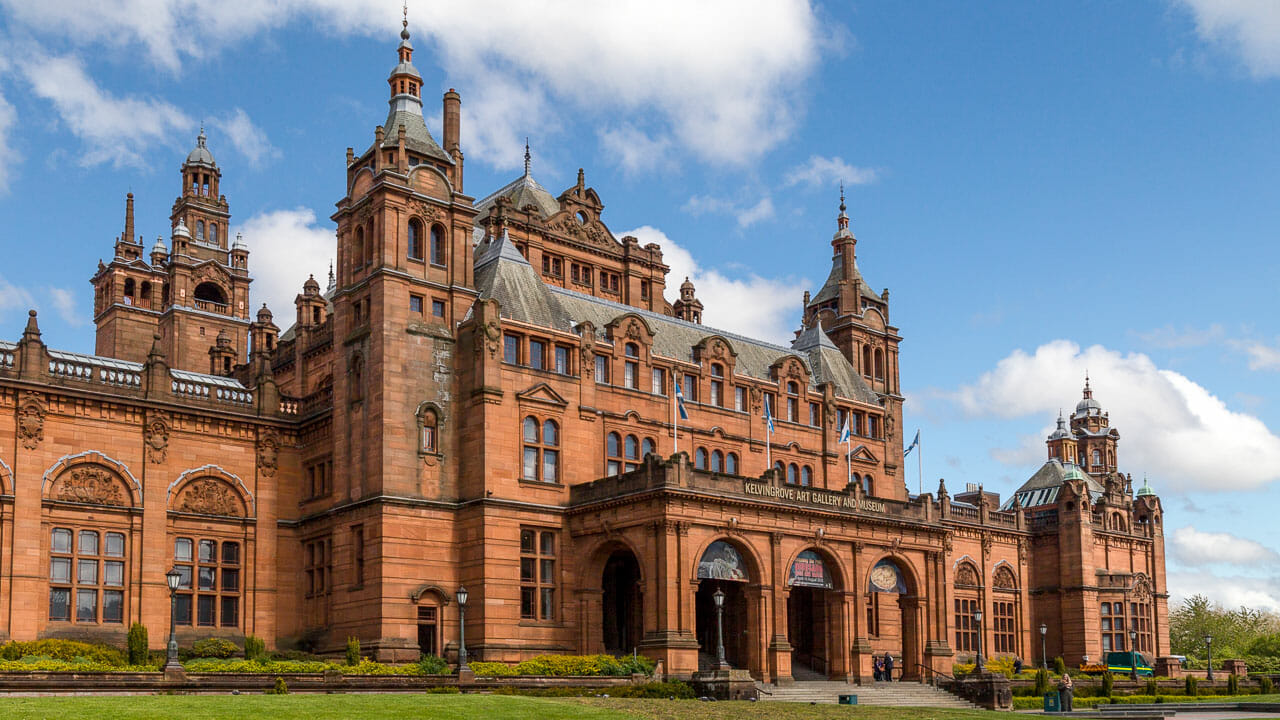
The exterior hints at the interior: Kelvingrove’s architecture is not directly attributable to a typical style, but combines various influences. Among them – as the website also reveals – is a strong reference to the Spanish cathedral of Santiago de Compostela. Spain in the middle of Glasgow?
When I stood in front of it myself, however, I was particularly impressed by the bright red sandstone from which Kelvingrove Museum was built.
In fact, I could have just walked round the building a few times and marvelled at all the little details of the façade. I would have missed a lot, because the building is not short on size and variety inside either.
Right in the large entrance hall, for example, your gaze wanders upwards along the slender organ pipes.
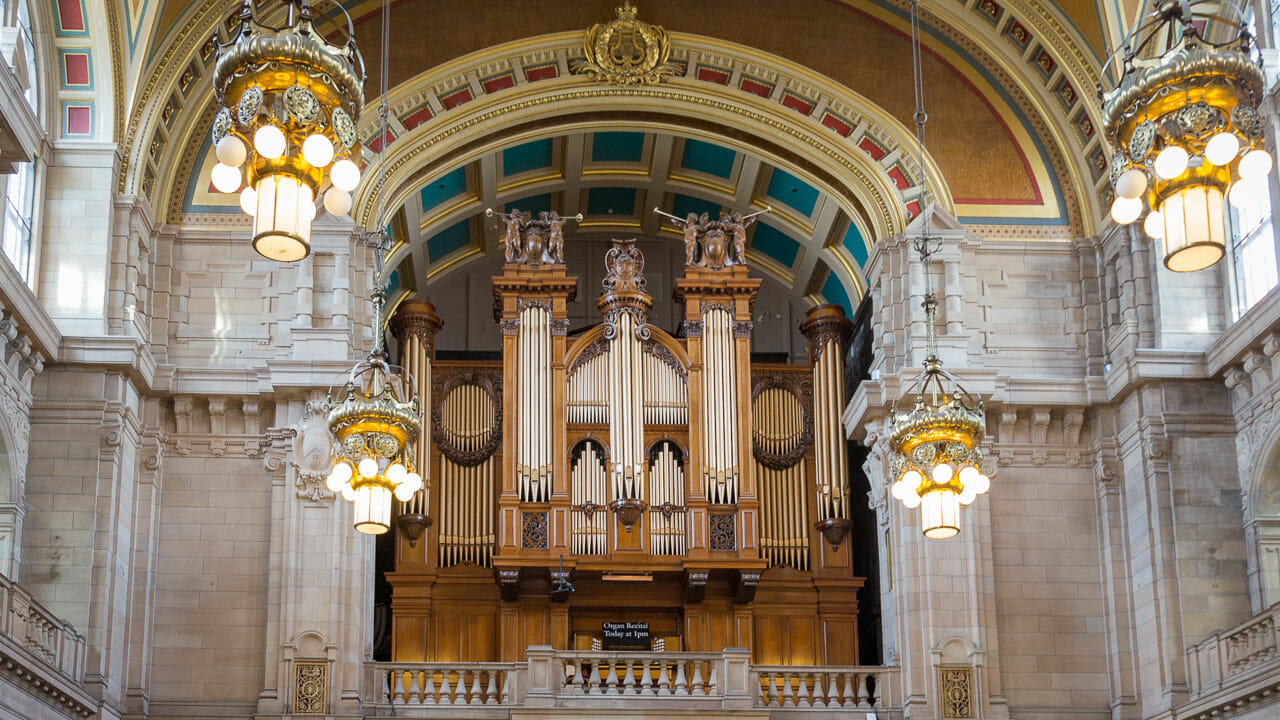
The instrument is by no means an exhibit – the organ is played regularly. The hall provides it with good acoustics, and one or two songs by the house organist Chris Nickol even become a minor internet hit. For example, when he played David Bowie’s “Live on Mars” to mark his death.
From the entrance hall, visitors can choose one of the two wings of the building: The more discerning will turn right to the east wing with its art exhibits. Here you will find exhibitions on the famous Glasgow designer and architect Charles Rennie Mackintosh and the entire Glasgow School, which made a name for itself in the Art Nouveau style in particular.
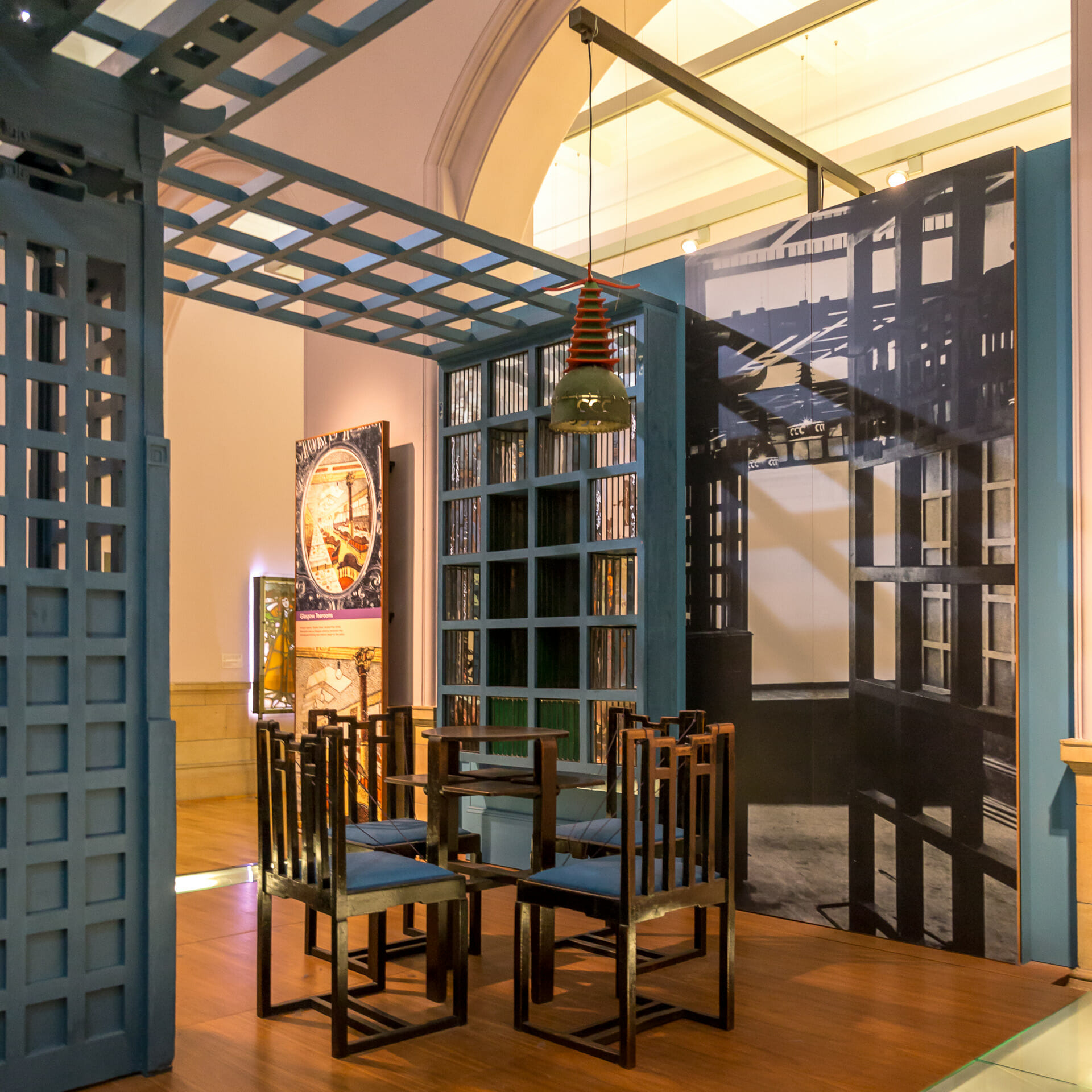
However, I was immediately drawn to the west wing: “Live” is its motto. I entered the room and involuntarily wanted to duck, because a propeller plane from the Second World War was clearly hurtling towards me.
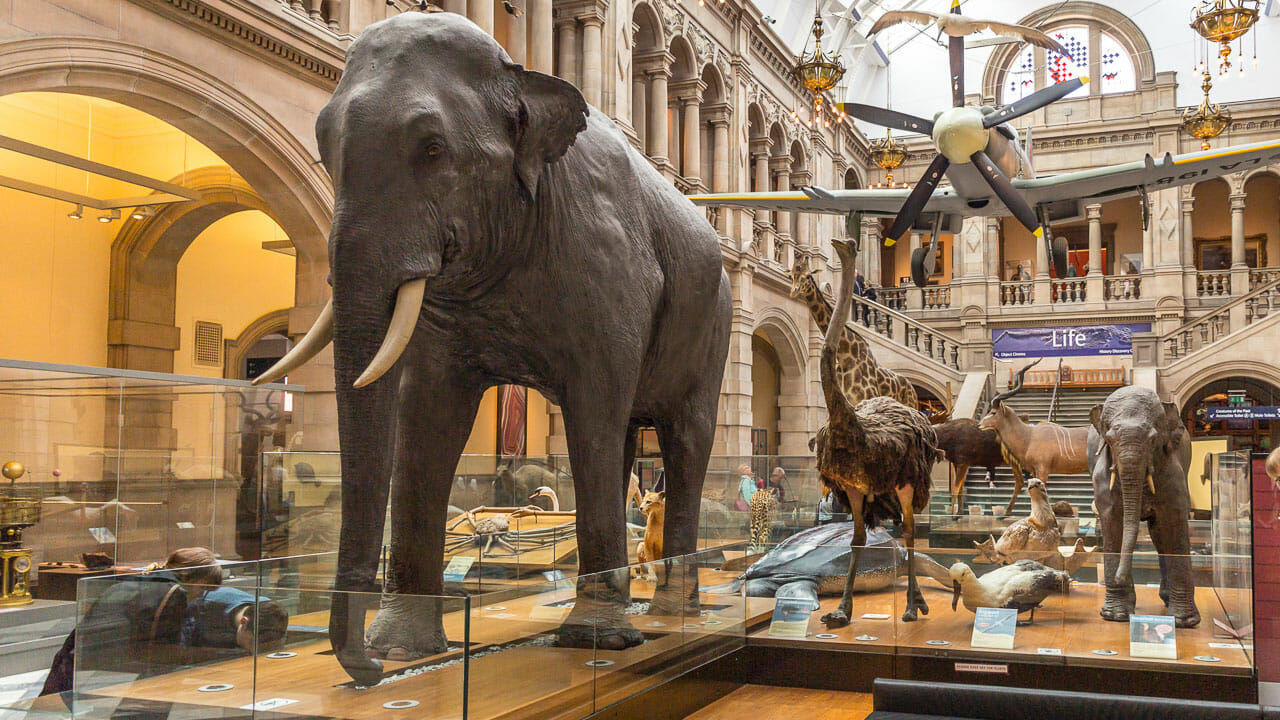
The aircraft was actually a Spitfire LA198, one of the museum’s showpieces. It hovers on ropes in the middle of the hall, diagonally above the second large piece in the room: Sir Roger the elephant, who had to be put down at Glasgow Zoo in 1900, but has been immortalised at Kelvingrove ever since.
Surrounding the large animal are many other stuffed exhibits: cats, eagles, crabs, tortoises …
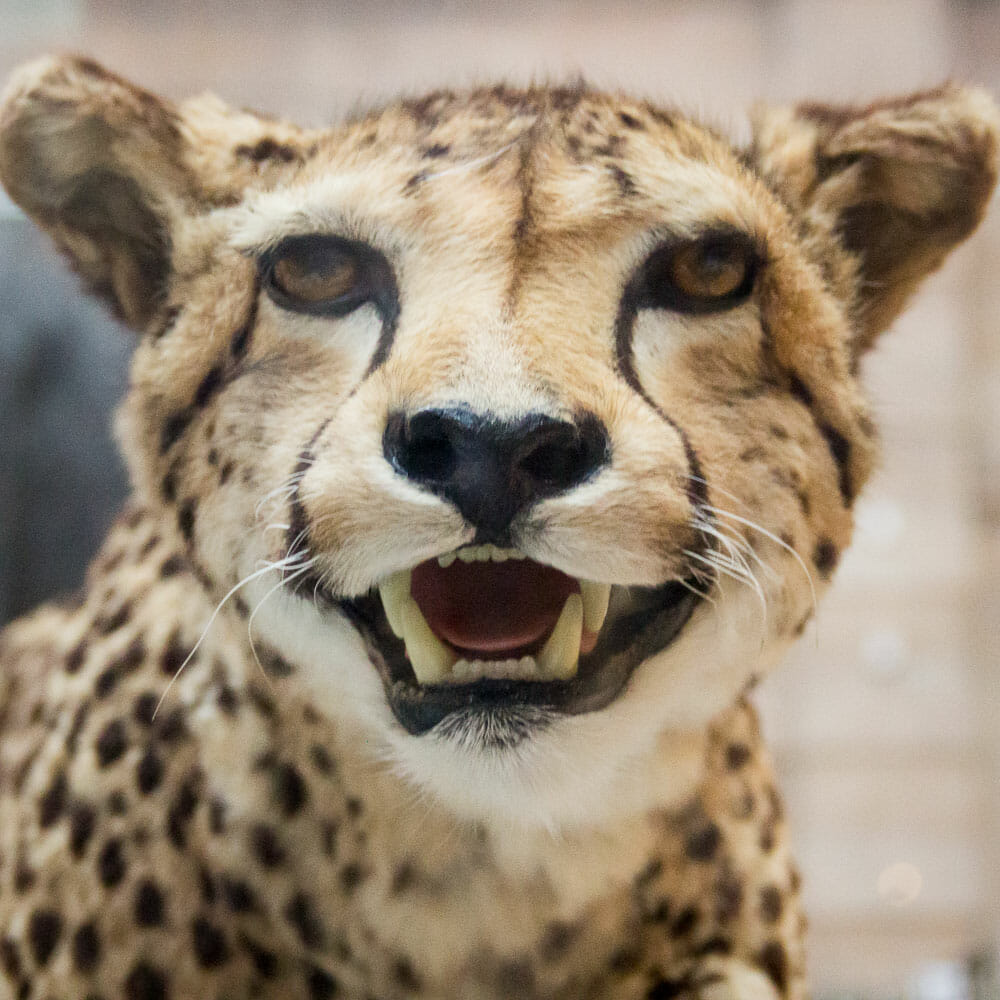
One of Scotland’s national animals, the so-called haggis animal, which is probably closely related to the Bavarian Wolperdinger, also has a home in one of the rooms.
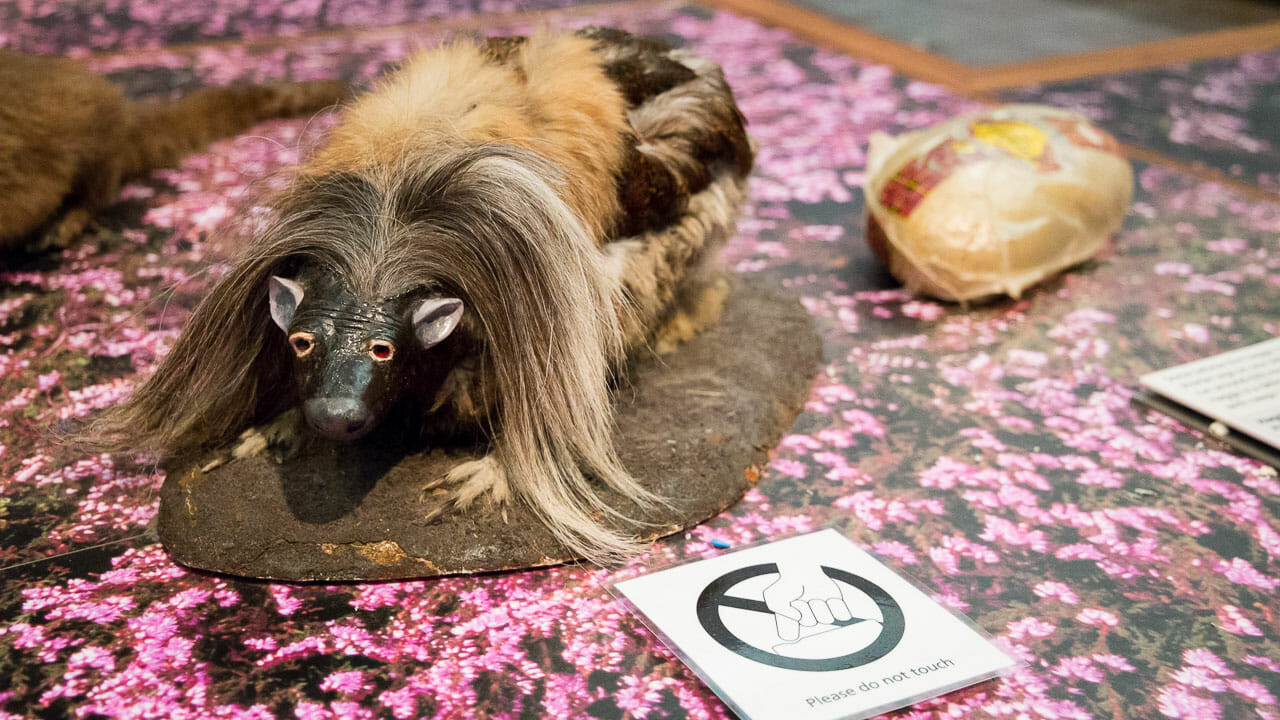
Of course, it was still important to me to learn more about Scottish history, about the first settlements, the Bronze Age, Vikings and more. I found what I was looking for on the first floor of the wing, where there are rooms dedicated to “Scotland’s first people”:
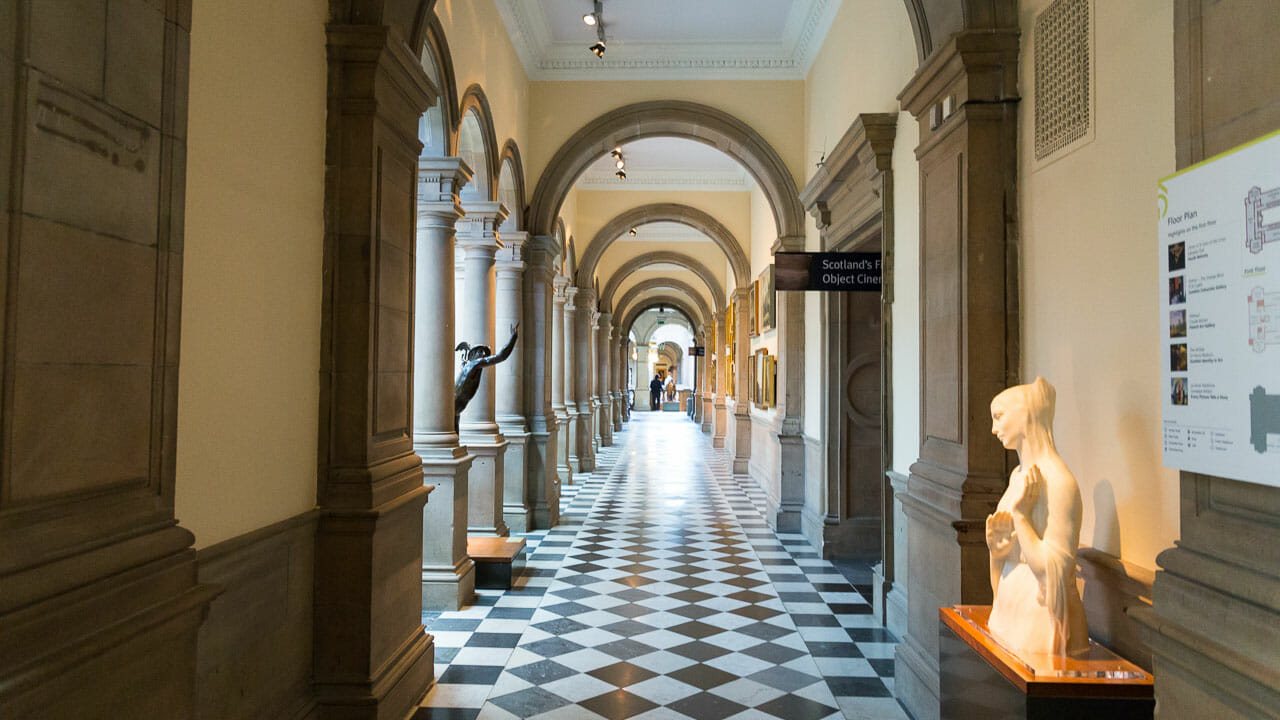
And indeed, the early Scottish period is beautifully presented here with explanations of the cup culture and the early monuments.
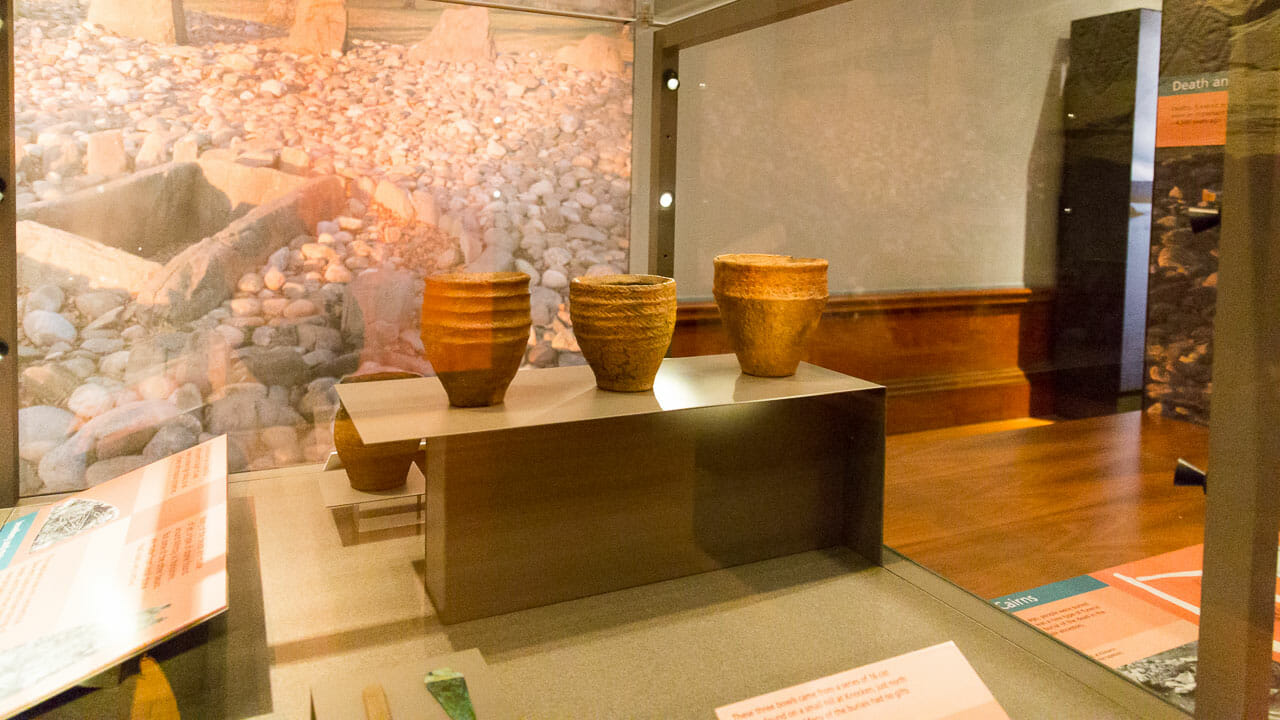
This continues in an interesting way right up to the Viking era.
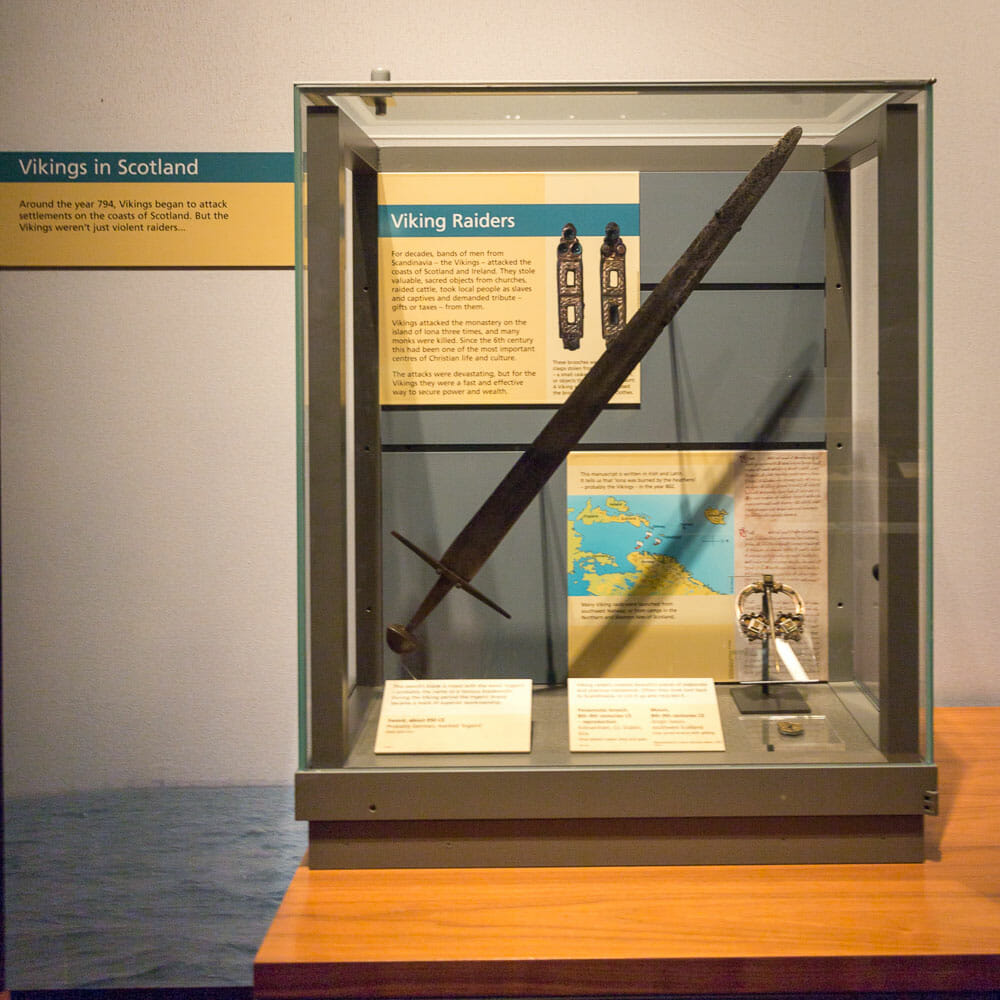
From the first floor you have another great view of the hall:
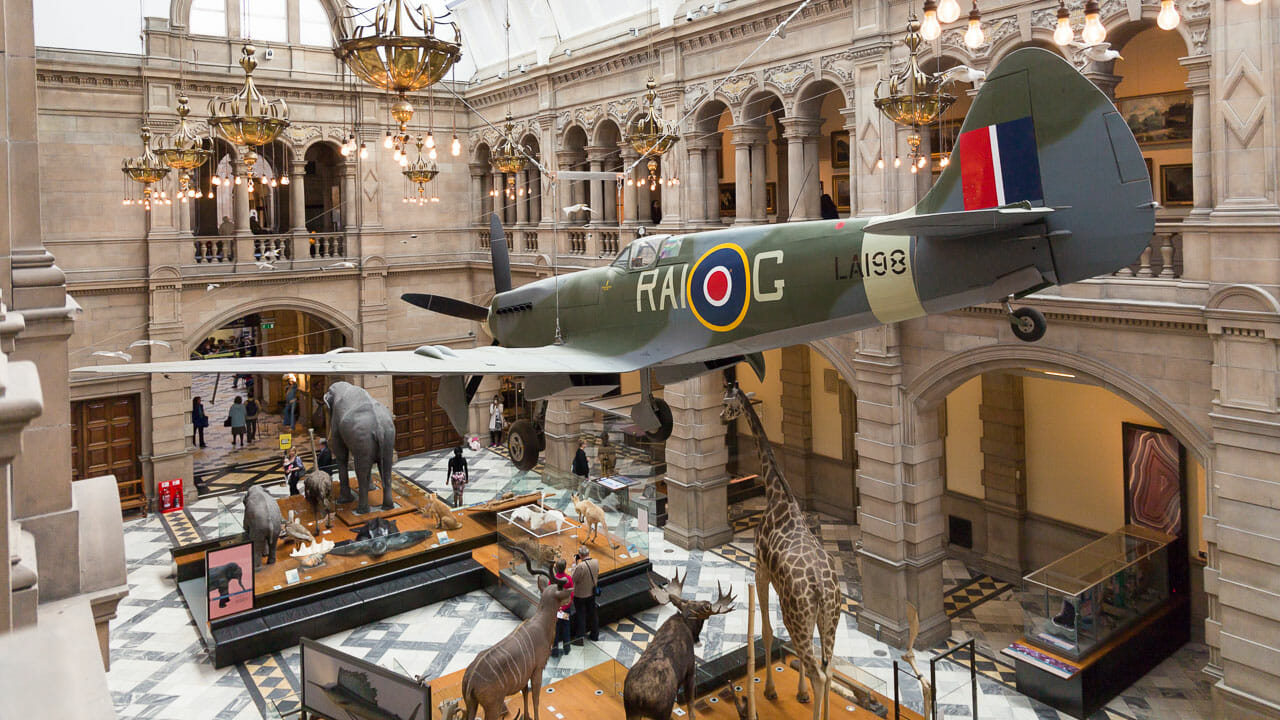
I barely had enough time to explore the first wing. I had probably miscalculated the size of the museum. And so I left Kelvingrove without having seen the wing with the artworks.
The nice thing is that I have a reason to come back soon.
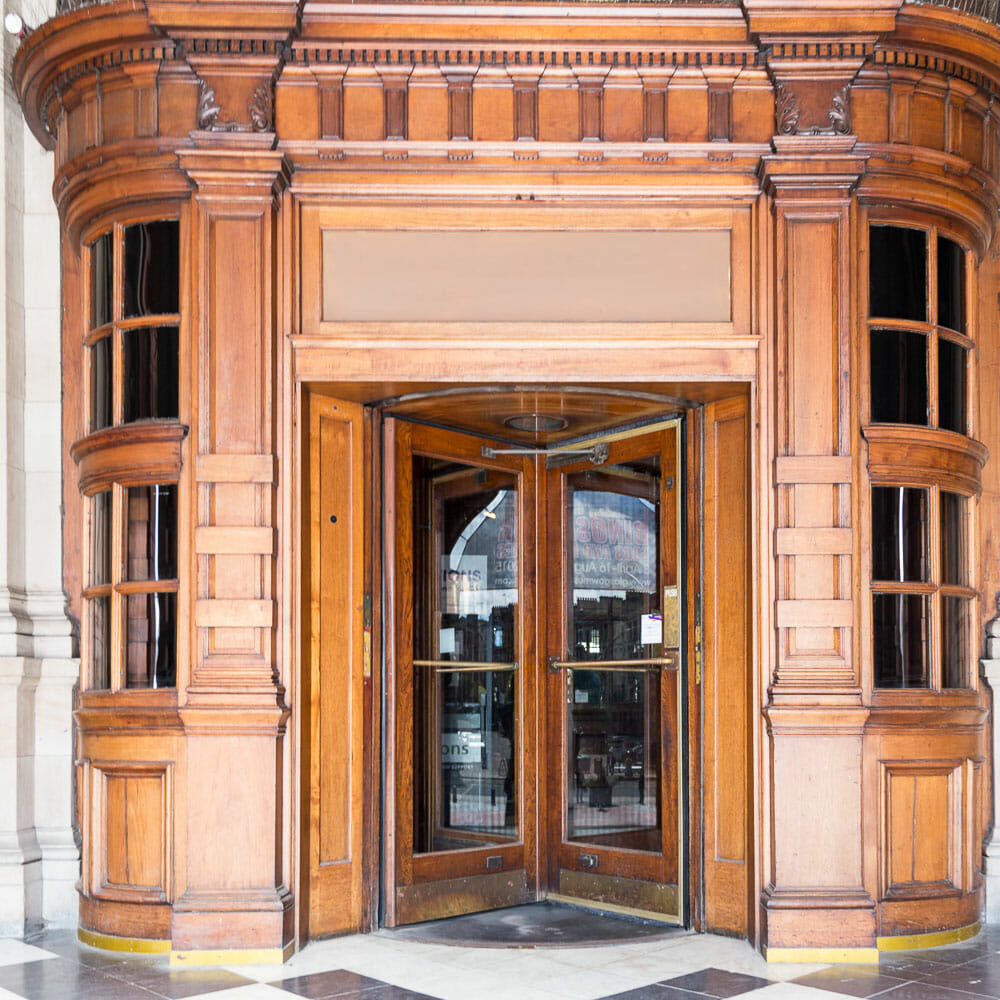
Knowledge: About Kelvingrove, the museum and world exhibitions
The area is named after the River Kelvin, which forms a small loop here coming from the north before flowing into the River Clyde a little further south-west. Incidentally, it is right next to the Riverside Transport Museum.
Kelvingrove translates into German as Kelvin Woods. The park of the same name was the venue for the 1888 World’s Fair. The surplus generated from this was invested in the construction of the museum, which was then used as an art palace at the 1901 World’s Fair in Glasgow.
Tip: Discover the small sculptures at Kelvingrove Museum
There are many small stone carvings both on the outside of the façade and inside. They are usually overlooked amidst all the splendour and glamour. But they characterise the charm of the building, which is why the museum has created a separate PDF for them online.
So the same applies in and around Kelvingrove: look up – a good tip for the whole of Glasgow city centre, by the way.
By the way: you can also approach the museum through Kelvingrove Park. A lovely walk.
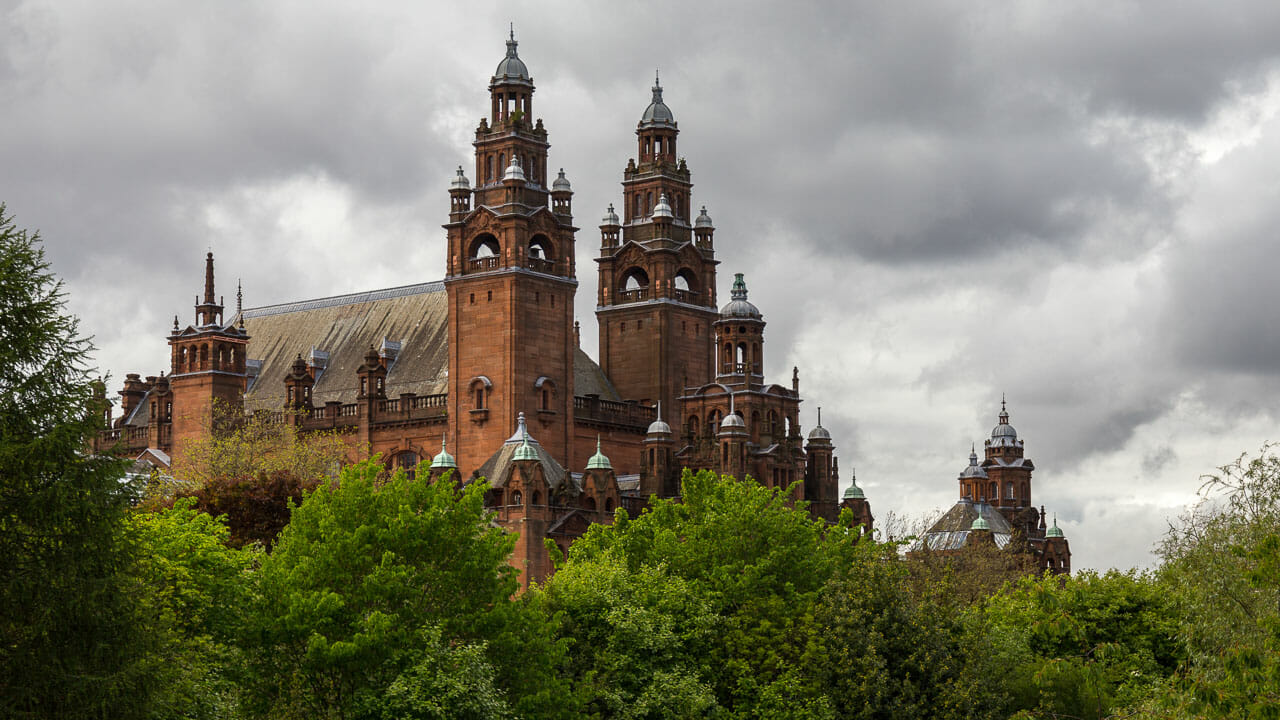
How to get there:
By car: There is a car park with 124 spaces at Kelvingrove Museum. There is a charge of £1 for up to four hours.
My tip: Within Glasgow, you should save yourself the stress and use public transport. Although you can get there easily by car from the M8, it’s not worth the stress and you can experience much more of the city by public transport.
One option is to buy a two-day ticket from City Sightseeing Tours. The bus runs to and from the sights and stops at Kelvingrove every twenty minutes.
Alternatively, there are the following public routes:
- Lines 2, 3 or 77 of the bus operator “First”
- Subway to Kelvinhall, then 5 minutes on foot
- Subway to Kelvinbridge, then through Kelvinpark, about a quarter of an hour’s walk